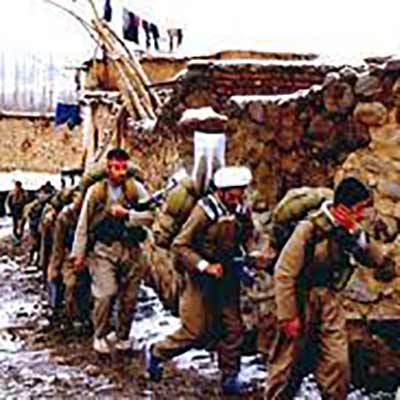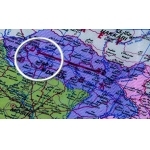Operation Fath-3
Azamsadat Hosseini
219 بازدید
In November 1986, the forces of the Islamic Revolutionary Guard Corps, under the command of the Ramadan Base and with the cooperation of the Kurdistan Democratic Party of Iraq, carried out Operation Fath-3 in the Zakho-Dohuk region. A region located 300 kilometers deep within Iraqi soil.
By creating ties with the Patriotic Union of Iraqi Kurdistan, which was under the leadership of Jalal Talabani, the Islamic Revolutionary Guard Corps planned irregular movements within Iraq and a series of irregular operations called Fath were blueprinted.[1]
The first operation was Fath-1, which was carried out on October 11, 1986. The operation attacked the Kirkuk oil facilities and the military and espionage bases located there. It also aimed to disrupt the export of Iraqi oil. This operation took place 150 kilometers within Iraqi.[2] Thereafter, the irregular operation of Fath-2 was carried out on October 25, 1986, in the northern axis of the Sacred Defense fronts, i.e., in the city of Dukan, Iraqi Kurdistan.[3] Then, on November 12, 1986, Operation Fath-3 was carried out. It aimed to penetrate into Iraqi territory and hit Aqaba and other Iraqi support centers located on the northern front.[4]
This operation was carried out in the three axes of Zakho, Erbil plain, and Mosul, and ended with the success of the Iranian forces. Iraqi Democratic Party forces were part of Barzani's forces, and during the first stage of Operation Fath-3 in the Zakho axis, the forces of the Irregular Wars Base of the Islamic Revolutionary Guard Corps destroyed the headquarters of the 38th Iraqi Division. This headquarters was in the Talagbar region, which was responsible for protecting the international road and oil pipelines from Iraq to Turkey. The Iranian forces attacked the positions of the Iraqi forces in the Zakho axis by besieging this city in the Golespi Valley and capturing the heights overlooking it, which were deep into Iraqi territory.[5]
In the second stage of this operation, which was carried out on November 16, 1986, Iranian forces clashed with Iraqi forces and managed to block and gain complete control of the Iraq-Turkey transit road. They also destroyed several tanks and personnel carriers, killing and wounding a number of Iraqis soldiers. In doing so, they were able to temporarily encircle the city of Zakho. During this siege, Iraqi Kurdish forces penetrated the city of Zakho in a large-scale infiltration operation and destroyed important government centers, including fuel tanks and gas stations, customs terminals, and oil loading docks. When Zakho was besieged by the Iranian forces, Iraqi planes bombed the city, which resulted in the injury and death of numerous people. Subsequently, the soldiers of the Ramadan Base, accompanied by the Iraqi Kurdish forces, closed the Skila Valley around Zakho and destroyed all the Iraqi bases located in this valley. In the axis of Mosul, a military headquarters of Iraqi forces was besieged by Iranian forces and, during the destruction of this headquarters, a number of Iraqi forces, including two officers, were killed. This operation continued for two days and was more widespread in the Erbil axis. During the operation in Erbil, an Iraqi gunner helicopter was also shot down.[6]
In this operation, more than 500 personnel from the Aqaba section of the Iraqi army were killed, wounded, or captured. Some armored tanks and 20 military vehicles were also destroyed. Additionally, the military and government centers of Saddam City in Iraq were heavily damaged, while some government centers in Dohuk City were also damaged.[7]
[1] Habibi, A., Record of Islamic Guards Operations in Eight Years of Sacred Defense, Tehran: Islamic Revolutionary Guard Corps, IRGC Public Relations and Publications, 5th Ch, 2004, p. 143.
[2] 8-year war operations guide, Tehran: Islamic Revolution Guards Corps, Holy Defense Documentation and Research Center, 1990, p.67; Habibi, Abu al-Qasim, the record of operations of the Islamic armies in the eight years of holy defense, p. 140
[3] Habibi, A., the record of operations of the Islamic armies in the eight years of holy defense, p. 142.
[4] Ibid, p. 143.
[5] Islamic Republic newspaper, No. 2164, November 5, 1986, p. 2; Habibi, Abu al-Qasim, the record of operations of the Islamic armies in the eight years of holy defense, p. 143
[6] Newspaper of the Islamic Republic, No. 2165, 16 November 1986, p. 2.
[7] Habibi, A., the record of operations of the Islamic armies in the eight years of holy defense, p. 143.




